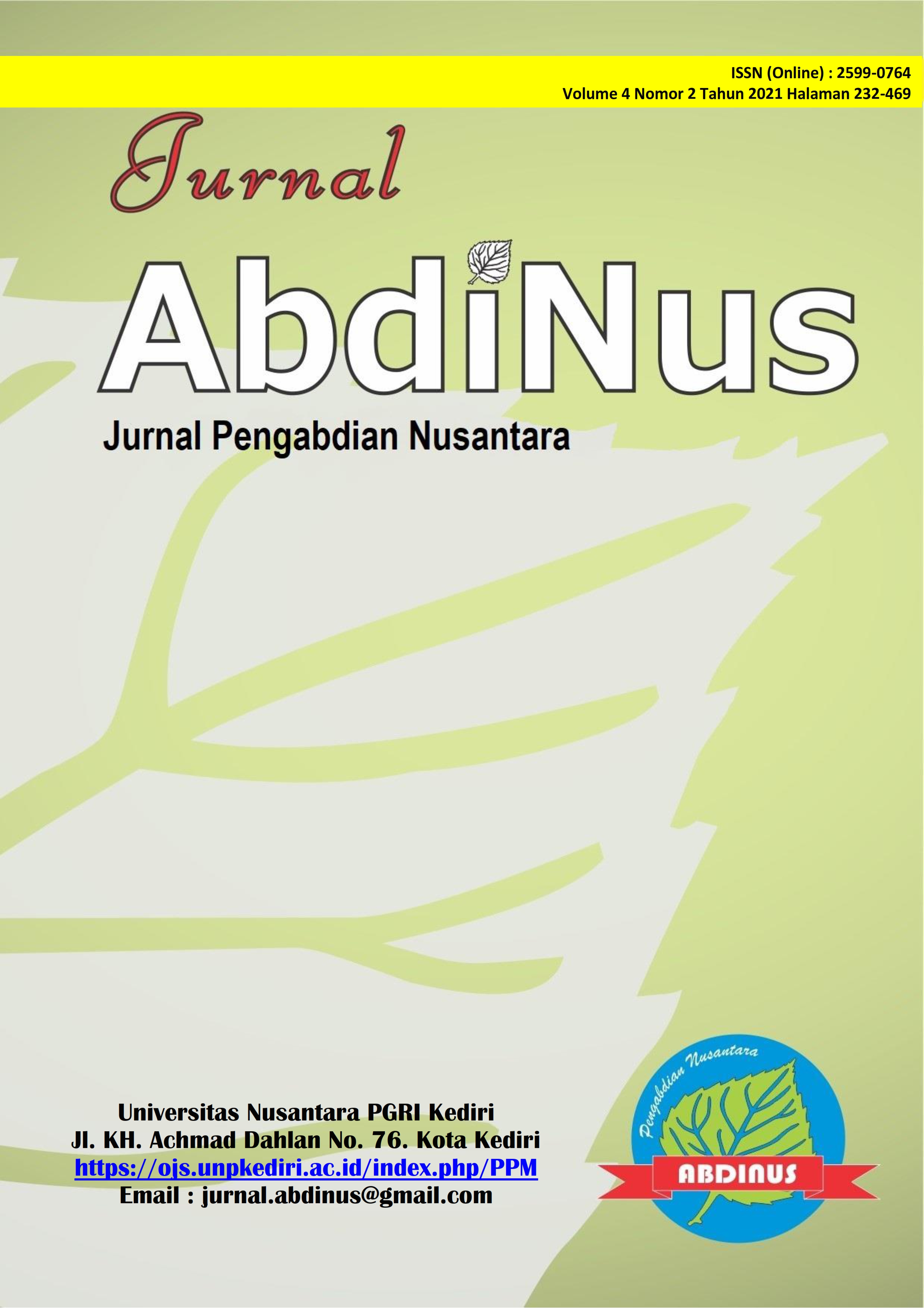Literasi Stunting pada Masa Pandemi Covid-19 untuk Ibu Balita dan Kader Posyandu Desa Umbulrejo Kapanewon Ponjong Kabupaten Gunung Kidul
 Abstract views: 313
,
Abstract views: 313
,
 PDF (Bahasa Indonesia) downloads: 0
PDF (Bahasa Indonesia) downloads: 0
Abstract
Empowering women was the most important efforts to create the nation's next-generation, including efforts to alleviate stunting children. The limitation of health knowledge was one of indirect determinant stunting children. Literacy may increase woman knowledge about children care, so they can meet nutritional needs and environmental health. This was a community engagement with classical methods, interactive discussions, brainstorming through virtual meetings with google-meet and WhatsApp groups about stunting on 18-21 September 2020. Participants were mothers and cadres at highest prevalance stunting children in Yogyakarta (Umbulrejo Village, District Ponjong, Gunung Kidul Regency) as many as 50 women. The output of literation was measured by attendance (75%), increasing of knowledge 25%, and participant anthusiasm. Overall, this was meet the target, as many as 80% attendance of participants, 32% increase of knowledge, and enthusiastically participating. Virtual literacy and telecounseling were effective method to provide education and health counseling in Covid-19 pandemic context.
References
Al-Ayed, I.H. 2010. Mothers’ knowledge of child health matters: Are we doing enough? J Family Community Med. 17(1):22–8. 10.4103/1319-1683.68785
Alderson, T.S.J., Ogden, J. 1999. What do mothers feed their children and why? Health Educ Res.14(6):717–27.
Contento, I., Balch, G.I., Bronner, Y.L., Lytle, L., Maloney, S.K., Olson, C.M. 1995. The effectiveness of nutrition education and implications for nutrition education policy, programs, and research: a review of research. J Nutr Educ. 27(6):277–420.
Contento, I.R., Basch, C., Shea., S, Gutin, B., Zybert, P., Michela, J.L. 1993. Relationship of mothers' food choice criteria to food intake of preschool children: identification of family subgroups. Health Educ Q.20(2):243–59.
de Onis, M., Blössner, M., Borghi, E., Morris, R., Frongillo, E.A. 2004. Methodology for estimating regional and global trends of child malnutrition. Int J Epidemiol. 3(6):1260–70. 10.1093/ije/dyh202
Ekwochi, U., Ndu, I.K., Osuorah, C.D., Amadi, O.F., Okeke, I.B., Obuoha, E. 2015. Knowledge of danger signs in newborns and health seeking practices of mothers and care givers in Enugu state, South-East Nigeria. Ital J Pediatr.41(1):18.
Haddad, L., Achadi, E., Bendech, M.A., Ahuja, A., Bhatia, K., Bhutta, Z. 2015.The Global Nutrition Report 2014: Actions and accountability to accelerate the world’s progress on nutrition. J Nutr. 145(4):663–71. 10.3945/jn.114.206078
Karnawat D, Karnawat BS, Joshi A, Kohli GK.2015. Knowledge, attitude and practices about infant feeding among mothers of urban and rural area of Ajmer district. J Med Res.1(3):90–4.
Khumar, 2018. A Dedicated Public Health Cadre: Urgent and Critical to Improve Health in India. Indian J Community Health. 41(4): 253–255.
Kuzma, J. 2013. Knowledge, attitude and practice related to infant feeding among women in rural Papua New Guinea: a descriptive, mixed method study. Int Breastfeed J. 8(1):16 10.1186/1746-4358-8-16
Mohieldin, A.2010. The impact of feeding practices on prevalence of under nutrition among 6-59 months aged children in Khartoum. Sudan. J. Public Health. 5:151–157.
Monaghesh, E., & Hajizadeh, A. (2020). The role of telehealth during COVID-19 outbreak : a systematic review based on current evidence. BMC Public Health, 20(1199), 1–9.
Osei, A., Pandey, P., Spiro, D., Nielson, J., Shrestha, R., Talukder, Z. 2010. Household food insecurity and nutritional status of children aged 6 to 23 months in Kailali District of Nepal. Food Nutr Bull.31(4):483–94.
Pramod Singh, G.C., Nair, M., Grubesic, R.B., Connell, F.A., 2009.Factors associated with underweight and stunting among children in rural Terai of eastern Nepal. Asia Pac J Public Health. 1(2):144–52. 10.1177/1010539509332063
Prentice, A.M., Ward, K.A., Goldberg, G.R., Jarjou, L.M., Moore, S.E., Fulford, A.J. 2013. Critical windows for nutritional interventions against stunting. Am J Clin Nutr. 97(5):911–8. 10.3945/ajcn.112.052332
Reay, R. E., Loot, J. C., & Keightley, P. (2020). Telehealth mental health services during COVID-19: summary of evidence and clinical practice. Australasian Psychiatry, 28(5), 514–516. http://doi.org/10.1177/1039856220943032
Shafiq, W., Hussain, A., Asif, M., Hwang, J., Jameel, A., Kanwe, H. 2019 .The Effect of “Women’s Empowerment” on Child Nutritional Status in Pakistan. Int J Environ Res Public Health, 16(22): 4499.
Srinivasan, C.S., Zanello, G., Shankar, B.2013.Rural-urban disparities in child nutrition in Bangladesh and Nepal. BMC Public Health.13(1):581.
Sudfeld, C.R., McCoy, D,C., Danaei, G., Fink, G., Ezzati, M., Andrews, K.G. 2015. Linear growth and child development in low-and middle-income countries: a meta-analysis. Pediatrics. 135: e1266–e75. 10.1542/peds.2014-3111
Victoria, C.G., de Onis, M., Hallal, P.C., Blössner, M., Shrimpton, R. 2009. Worldwide timing of growth faltering: revisiting implications for interventions. Pediatrics. 125: e473–e80. 10.1542/peds.2009-1519
Copyright (c) 2021 Jurnal ABDINUS : Jurnal Pengabdian Nusantara

This work is licensed under a Creative Commons Attribution 4.0 International License.











